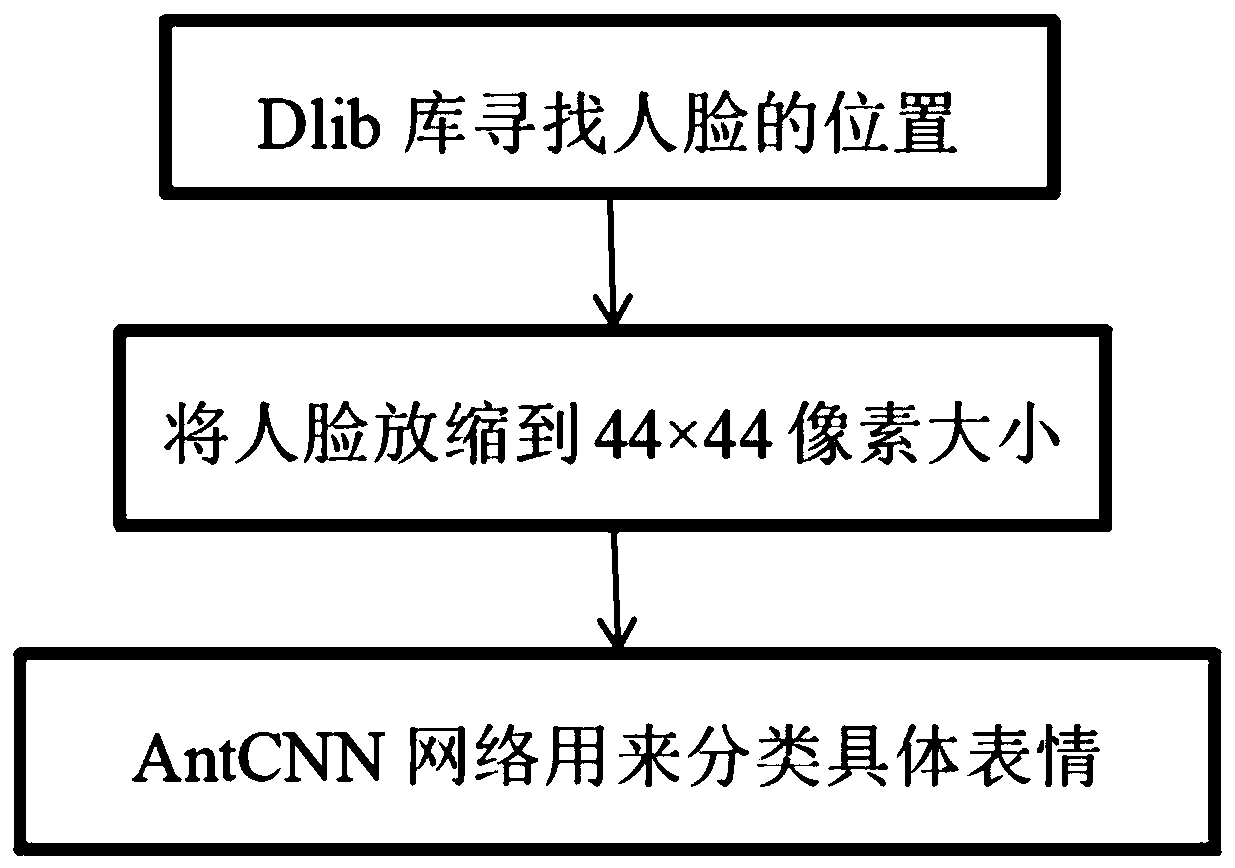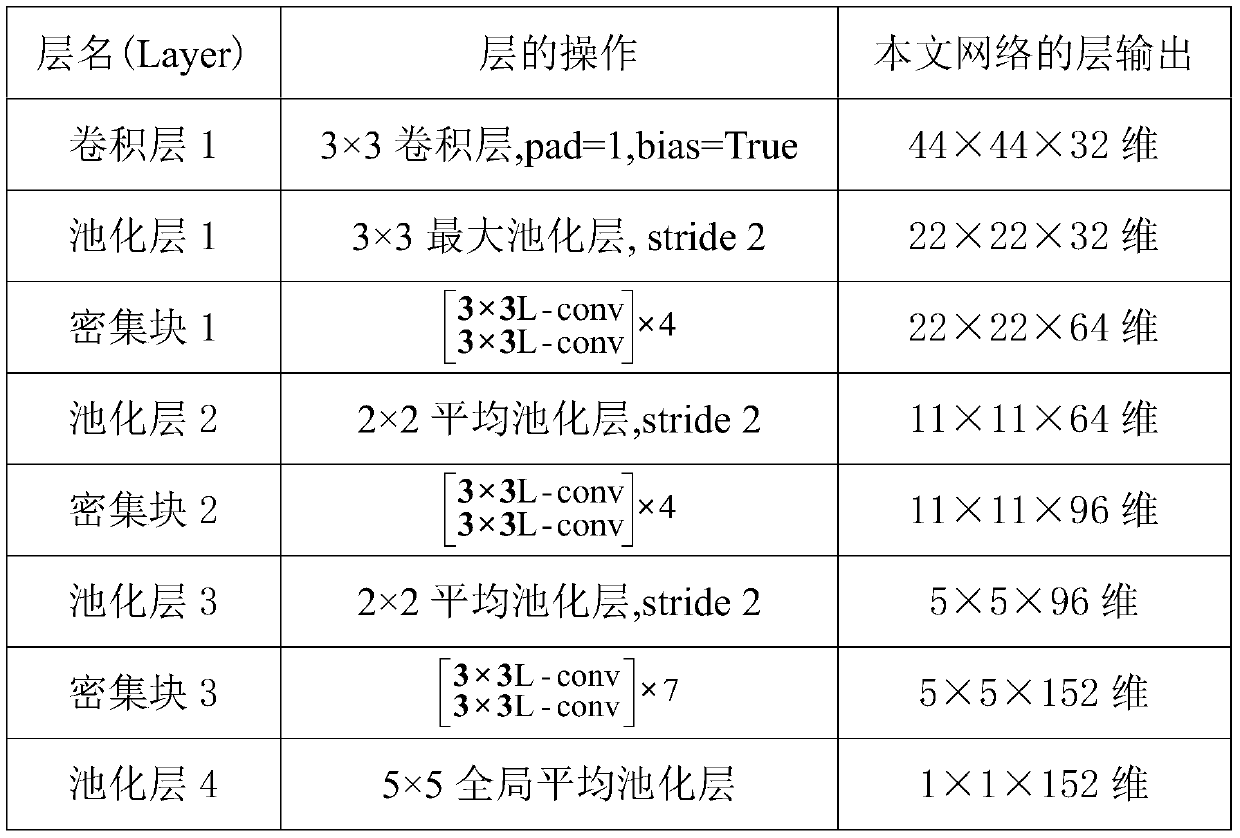Lightweight facial recognition method for edge computing
An edge computing and facial recognition technology, applied in the field of deep learning, can solve the problems of waste of resources, poor performance, etc., to achieve the effect of less calculation, high accuracy, and reduced complexity
- Summary
- Abstract
- Description
- Claims
- Application Information
AI Technical Summary
Problems solved by technology
Method used
Image
Examples
Embodiment
[0039] In this embodiment, a lightweight face recognition method for edge computing is designed, and a lightweight convolutional neural network classification model for edge computing with small size input is designed, named AntCNN, as figure 1 Shown, method of the present invention comprises the following steps:
[0040] S1. Construct a lightweight facial recognition network model AntCNN oriented to edge computing devices. The network structure of AntCNN includes: a first convolutional layer, a first pooling layer, a first dense block, a second pooling layer, a second dense block, third pooling layer, third dense block, and third pooling layer;
[0041] S2, capturing the facial image, and compressing the facial image into small size pixels, as the input of AntCNN;
[0042] This embodiment first uses the dlib library to capture facial images, which captures a face at a random time from 0.6 to 3 seconds. Capturing faces from video is smooth and doesn't stutter. In this embod...
PUM
 Login to View More
Login to View More Abstract
Description
Claims
Application Information
 Login to View More
Login to View More - R&D
- Intellectual Property
- Life Sciences
- Materials
- Tech Scout
- Unparalleled Data Quality
- Higher Quality Content
- 60% Fewer Hallucinations
Browse by: Latest US Patents, China's latest patents, Technical Efficacy Thesaurus, Application Domain, Technology Topic, Popular Technical Reports.
© 2025 PatSnap. All rights reserved.Legal|Privacy policy|Modern Slavery Act Transparency Statement|Sitemap|About US| Contact US: help@patsnap.com



